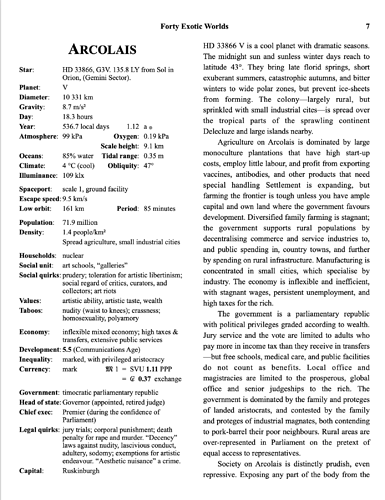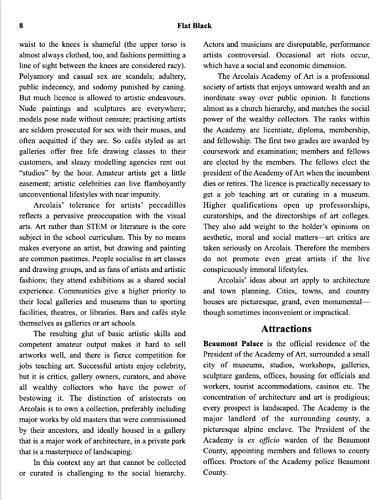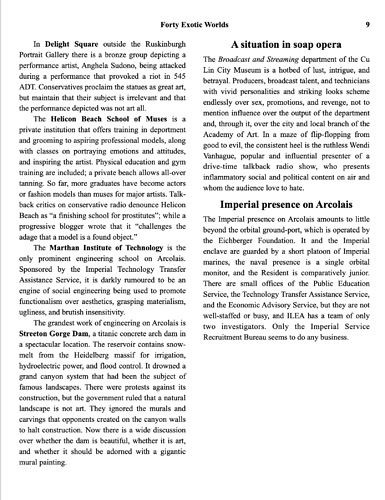Well, it’s clear that the entry on Arcolais is unclear and needs a complete re-write. And you know what? I am not going to do it now. I’m going to defy my paralysing habit of polishing before I have finished the draft. Tomorrow I will go on, probably to Nahal.
There remains a question of scope and format. Should I be more consistent in the way I compare the tabbed data of these worlds to the corresponding figures for Earth?
I have some figures in SI with a conversion to Earth-based trivial units: diameter and gravity. The easiest way to be more consistent would be to leave out the values on Earth diameters and gee and note the values in the key.
The year length is presented in local days and in Earth-based trivial units, with nary a megasecond in sight. But I represent that Earth’s year is acting as a standard unit of time here, not as a comparison.
I have some figures in SI or other standard units, with a note in the key as to what Earth’s value is. Atmospheric scale height, ocean coverage, tidal range, average surface temperature, (obliquity ought to be in here but it seems I left it out of the key entirely), escape speed, altitude of low orbit, period of low orbit, population, and population density. There really isn’t room to add equivalent values in Earth comparison to all of these.
Barometric pressure is given in an Earth equivalent, with the SI value Earth’s barometric pressure noted in the key. The partial pressure of oxygen is given in terms ot Earth’s total barometric pressure, the SI value for Earth being noted in the key but no value for planet in terms or Earth’s actual equivalent being offered.
The level of illumination is given in an Earth equivalent, with no conversion to lux anywhere.
That is a bit of a mess, though all the decisions seemed good at the time.
Giving values in SI and equivalents as a multiple of Earth’s corresponding value for every datum for which a comparison is meaningful would not be practical. There isn’t space in a column.
Giving values in SI (or other standard scales such as hours, years, and °C) only, with Earth’s diameter and gravity added to the key, would be consistent. But it would mean becoming rather more obscure to American readers (I am not going to add US Customary equivalents), beside which pascals aren’t all that well-known in the rest of the Anglosphere, and lux are obscure even to me.
Advice?



